The Boss isn’t the only famous bear of Banff! With an estimated 60-65 bears frequenting this National Park, Parks Canada is familiar with many bears in the area.
Parks Canada began collaring and monitoring bears in Spring 2012 under various research projects, including the Canadian Pacific Grizzly Bear Research Project and the Eastern Slopes Grizzly Bear Project.
Parks also uses remote cameras and DNA analysis to help understand grizzly bear populations in Banff, Jasper, Yoho, Kootenay, and Waterton Lakes National Parks.
They’re able to find the parents of different bears by analyzing the DNA found in collected fur.
Thanks to their efforts, the lives of certain celebrity Bears of Banff are a matter of public record.
Table of Contents
Bear 122 (The Boss)
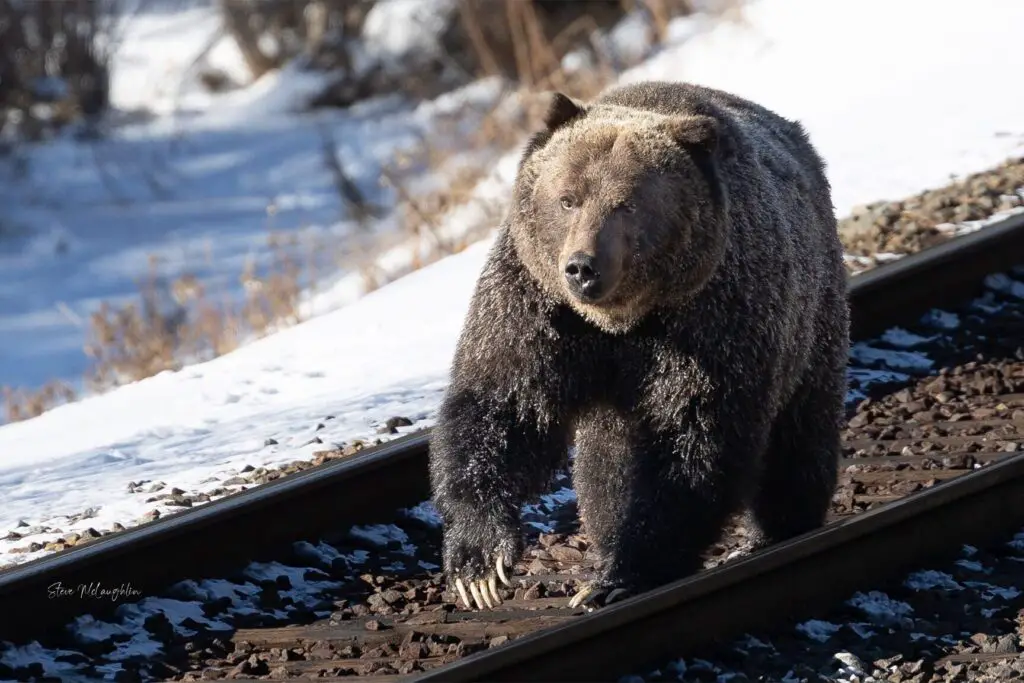
It’s hard to name a more famous grizzly than Bear 122, The Boss of Banff. He is the largest, most imposing male in the Park, and his reputation certainly precedes him.
He’s been hit by a train (twice!) but thankfully has learned his lesson, as he now vacates the tracks when he hears the whistle blowing.
The Boss is so famous that we have an entire article dedicated just to him.
The Boss has been known to hang around near the Town of Banff, particularly around the train tracks. He likes to collect the grain spilled from the trains.
Up until just recently, he had a reputation of being docile and uninterested in humans. (While still a fierce competitor towards other male grizzlies in the Park.)
But in 2023, The Boss made the news for bluff charging a resident. He had been hanging around in backyards in Banff, this time to grab crab apples from the trees.
When certain food sources are scarce, it sometimes forces bears closer and closer into town and into contact with people.
What is bluff charging?
Bluff charging is when a bear runs towards you, but stops and turns away before making physical contact.
A bluff charge is meant to scare and intimidate you, typically because the bear itself feels threatened.
Although, as the name suggests the bear is just “bluffing” and not trying to hurt you, this is still an aggressive behaviour that suggests humans and bears are too close to each other.
We can only hope that The Boss goes back to minding his own business, as that ensures a long and happy life for him.
Bear 136 (Split Lip)

Split Lip is best known for being The Boss’ main rival. They have been filmed chasing each other, and we can only speculate as to who left the scars on his lip!
Split Lip is another big dominant boy in the Park, so named because of the obvious marks around his mouth. He definitely has a rougher and more rugged look than the Boss, with equally terrifying white claws.
Split Lip is also infamous for cannibalizing other bears in the Park, which is common for grizzly bears of his size.
In 2015, he made the news for eating a smaller grizzly bear who was only 1/3 of his size! Parks Canada couldn’t confirm whether he had killed the bear himself, but it’s likely that he did.
He also killed one of Bear 142’s cubs near Morant’s Curve along the Bow Valley Parkway in 2020. This is natural behaviour amongst grizzly bears, and male grizzlies can be one of the biggest threats to new cubs.
The spring before, Bear 142 and two cubs had been spotted running across Lake Louise to escape Split Lip – that time they just made it.
Like the Boss, Split Lip does not seem to be aggressive towards humans – at least so far. He caused a stir when he shared a hiking trail with a group of 20 hikers at Johnston Canyon in 2016, and again when he crossed the Pedestrian Bridge in Banff in 2017.
So it’s clear that he isn’t afraid of humans, though he hasn’t tried to attack one of them.
Visiting Banff?
Here are some wildlife tours that cover some of the most popular spots in Banff for wildlife to hang out! While you’re never guaranteed to see wildlife, a tour can give you some of the best chances – with the added bonus of a guide.
Bear 142 (+ Her Cub)
Bear 142 is a beautiful mama bear who, like her male counterparts, has made the news several times. As of 2024, she is approximately 14 years old. Her mother is another quite famous female grizzly, #73 and her father is the Boss, #122.
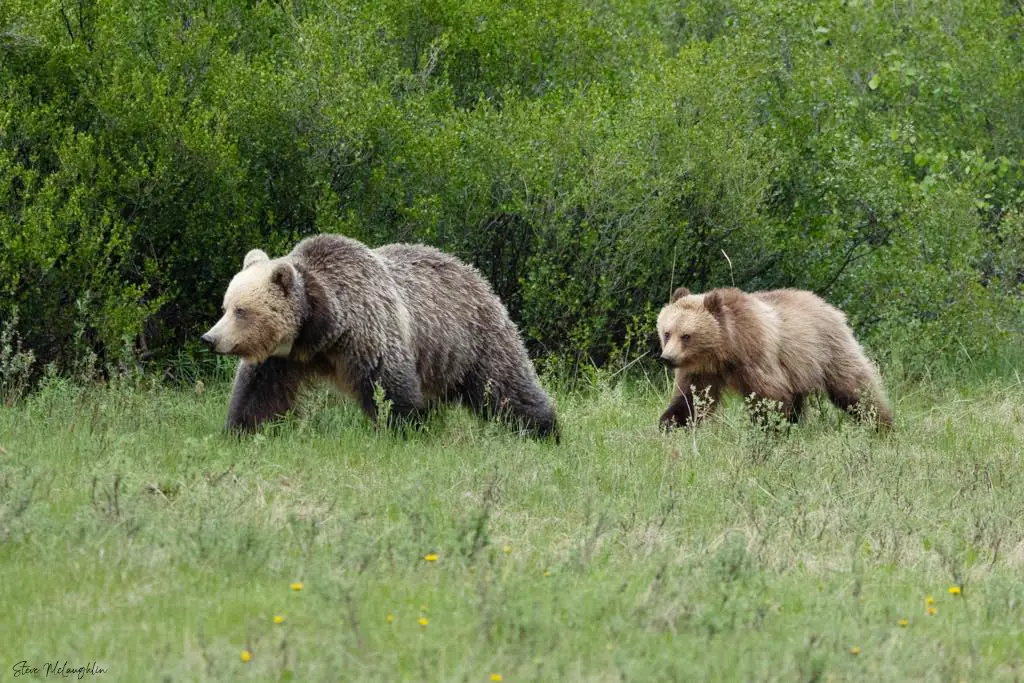
Born in 2022, this cub is the only survivor from a litter of 3.
Bear 142 is well known by locals as she likes to hang out around Lake Louise and the Bow Valley Parkway.
Like elk, mother bears may choose to stay closer to human civilization to try to protect themselves from other predators – namely male grizzlies.
Split Lip in particular has actively hunted and killed several of her cubs. He is likely the reason that she only has one remaining cub from last year’s litter.
Just this summer, I watched Bear 142 trying to get some sleep along with her small cub. A large black bear scared them off.
Later that day, I saw them once again. This time Bear 122 (The Boss) came along and spooked them away as well.
It’s not easy being a single mama bear in Banff National Park – always on the run from threats!
Bear 142 has had a few concerning run-ins with people. Around 2015, she got into a tent in the back country and bluff charged a resident in Lake Louise.
Later, in July 2019, she punctured a hole in a tent at Protection Mountain Campground searching for some oats that she smelled inside.
Thankfully, this time she was scared away by vehicles honking and the campers inside. Nobody was injured, and she didn’t manage to secure any food.
When Bear 142 returned to the same campground later that year, it prompted Parks Canada to completely ban soft-sided (tent) camping there for the rest of the season.
For the sake of the future grizzly population, it’s incredibly important to protect breeding females like her.
Bear 142 also made the news just recently in 2023 for following a group of 13 hikers down a trail near Moraine Lake.
While it must have been a terrifying experience for the hikers, wildlife experts who watched the video explained that she and her cub were probably just using the same trail out of convenience.
From their posture and behaviour, they didn’t seem keen on hurting anybody. While the cub appeared to bluff charge the hikers, this may have been curious behaviour on the part of the cub and not truly predatory.
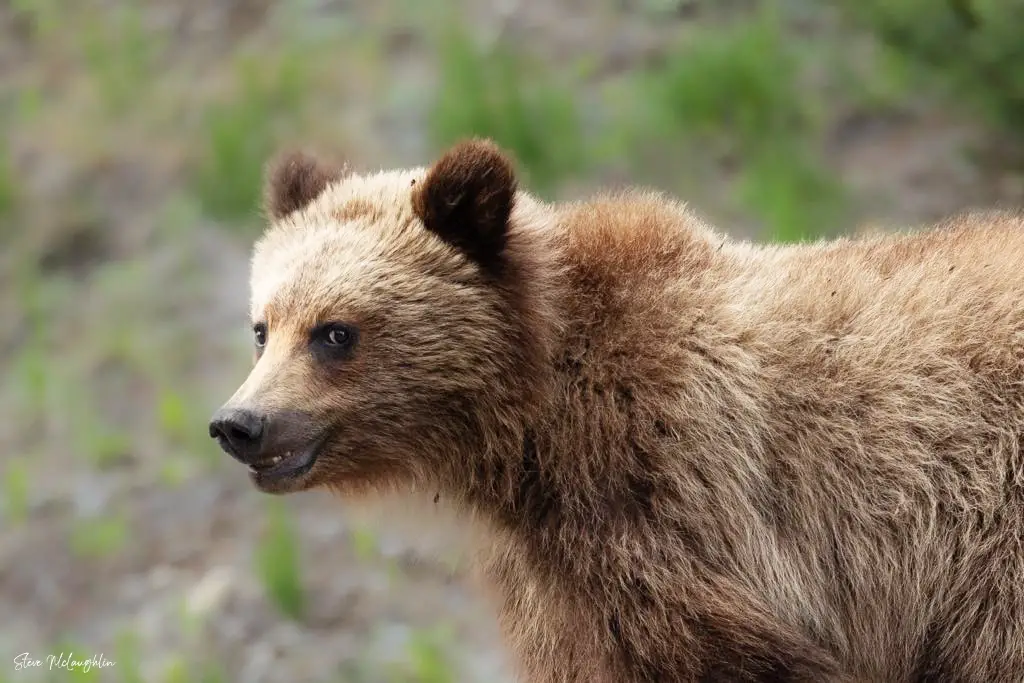
Bart
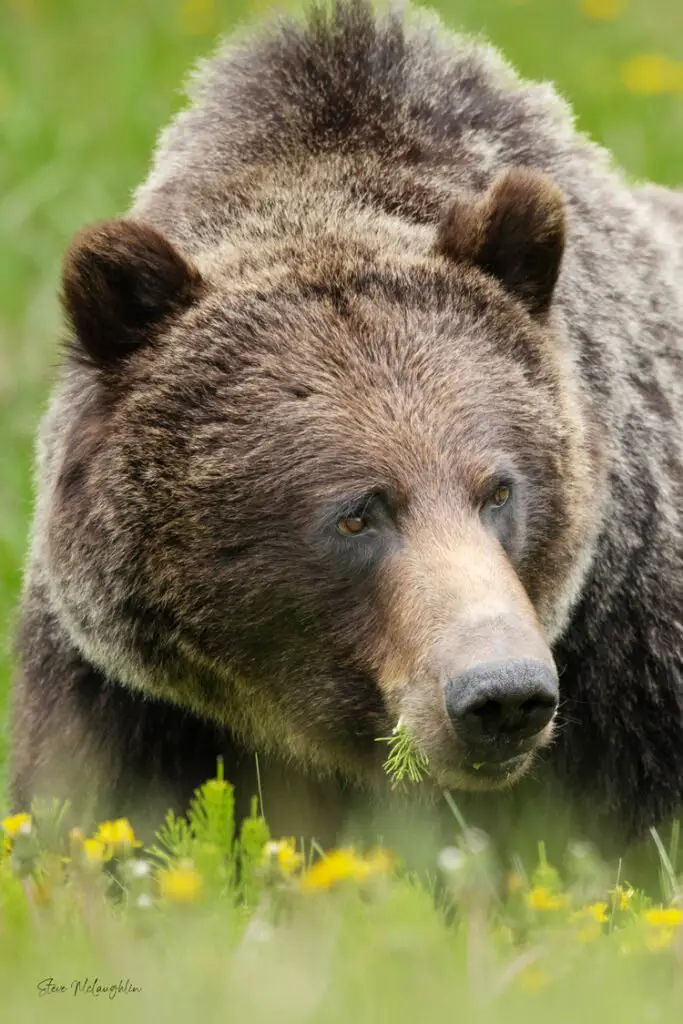
Images of Bart are available in our print shop!
Bart is not numbered by Parks Canada, but he was named by locals and is seen quite often.
Another large male grizzly, he definitely has his own distinct face and personality (as you can see from the pictures.)
Bart is most often spotted in Kananaskis, his home range, which neighbours Banff National Park.
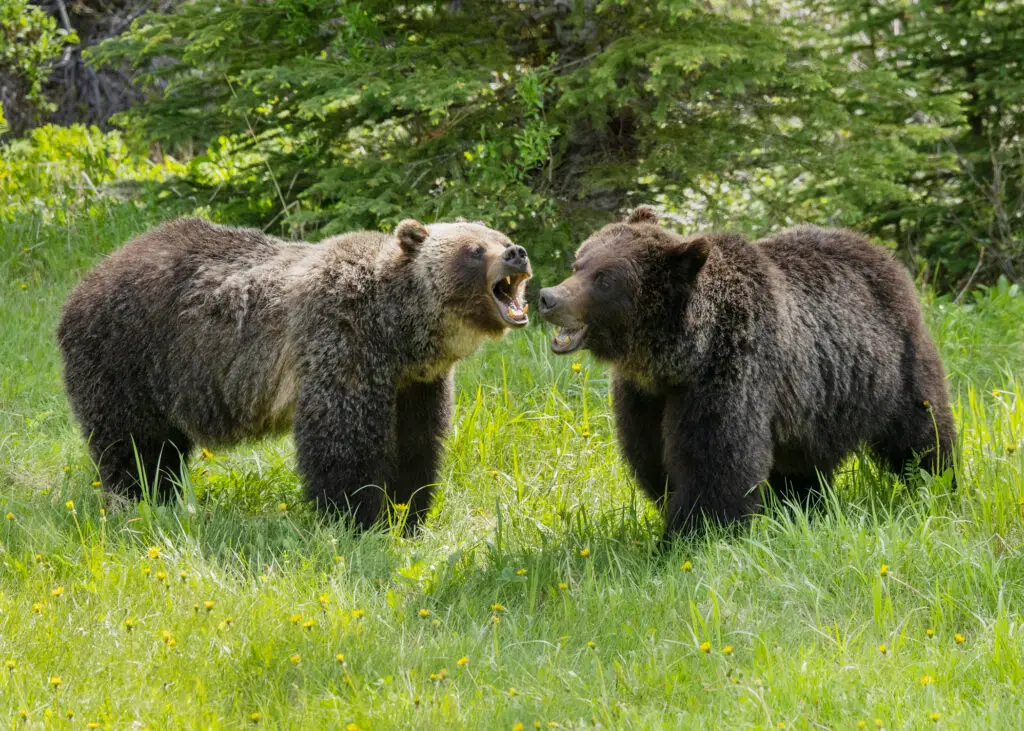
Mating season is the one time of year that male and female grizzlies are friendly towards each other.
There is thankfully not much to report about Bart, because it seems he has so far kept to himself. He hasn’t made the news for any major run-ins with humans!
Gone, but not Forgotten
Bears have captured our attention for decades in Banff National Park! Here are some famous bears who are sadly no longer with us, but were celebrities in their time.
Bear 148
Bear 148 was another very well known female bear in the Banff area. Born in the Park to Bear 64 (mentioned below), she became infamous in her six short years for becoming too habituated to humans.
Bear 148 was collared by Parks in 2014. She became known for her repeated encounters with people, including getting into somebody’s back yard to eat crab apples and interrupting a rugby game.
Twice she pursued people with their dogs. The first time, she didn’t get very close, but in another encounter she was chased away by the dog. Shortly after that, she came within 1 meter of a jogger. Although nobody was injured, it was clear that Bear 148 was becoming a safety concern.
A petition circulated to keep her alive, collecting over 27,000 signatures. Rather than euthanizing her, Parks Canada relocated her to other National Parks instead, where the hope was that she would live a natural life away from civilization.
She was relocated twice. The first time, she found her way back to Sunshine Village from Kootenay National Park in just a few days. The second time, in 2017, Bear 148’s story came to a sad and early end at the hands of a hunter in British Columbia, where grizzly hunting is still legal.
Bear 72
Bear 72 was another notable female grizzly known to be Bear 142 and 143’s mother. She was called the Matriarch of the Lake Louise area, and she raised at least three known sets of cubs. Like her daughter 142, she managed to live amongst humans and didn’t tend to display any aggressive behaviour towards them.
In October 2014, she was spotted in Chickadee Valley in Kootenay National Park. When she didn’t show up at any of her usual locations the next spring, Parks Canada pinpointed her tracking collar at a high elevation location. Though they sent staff to retrieve the collar, assuming it may have fallen off, they weren’t able to reach the location high up on a cliff.
Bear 72’s absence that year was highly notable, making the local news. Parks Canada assumed that she may have died of old age, with bears having a life expectancy of 25-30 years.
The Rocky Mountain Outlook later reported that Bear 72 had died when she slipped off an icy cliff in the spring of 2015, at the age of 22.
Bear 64
Bear 64 was another collared female bear who was very tolerant of people and known to hang out around the townsite of Banff. Even in high risk situations, like with her cubs or near a meal, she was known to mind her own business. She was one of the first bears to demonstrate the use of the wildlife crossings built over the Highways.
Bear 64 had at least two known sets of cubs, but sadly the first 3 didn’t make it past 5 years old. The first died young of unknown causes, while one female was killed on the train tracks, and another on the highway.
In 2014, she left three 2.5 year old cubs to fend for themselves around the Banff area: Bear 144, 148, and another untracked female (all fathered by the Boss). It’s still not known what actually happened to Bear 64, as Parks Canada could not locate her. She was 24 years old when she presumably passed away, which is an impressive age for a grizzly bear to reach.
Bear 8
Bear 8 was the son of Bear 72, and a sibling of Bears 142 and 143. He had shown many aggressive behaviours towards people over the summer time, and finally stalked a mountain guide and his client near Saddleback Pass that same September. They climbed a tree to escape him, and he followed them, tormenting them for three hours before he finally wandered off. He was destroyed by Parks Canada in 2011 at the age of 6 years old.
What can we learn from the Bears of Banff?
While it’s no doubt that grizzly bears can pose a threat to humans, it’s obvious that these powerful giants are just trying to coexist and carve a living for themselves in our pristine National Parks that they call home.
These bears exist in a very unique environment. As protected as Banff National Park is, there’s no denying that it’s a major tourist destination visited by millions of people each year.
The bears’ survival relies not only on their ability to tolerate humans, but also our ability to be considerate towards our wild neighbours.
Doing our best to stay away from the bears, keeping food completely inaccessible when we go camping, and taking other bear safety precautions are all things we can do to help the grizzly bears of Banff National Park thrive.
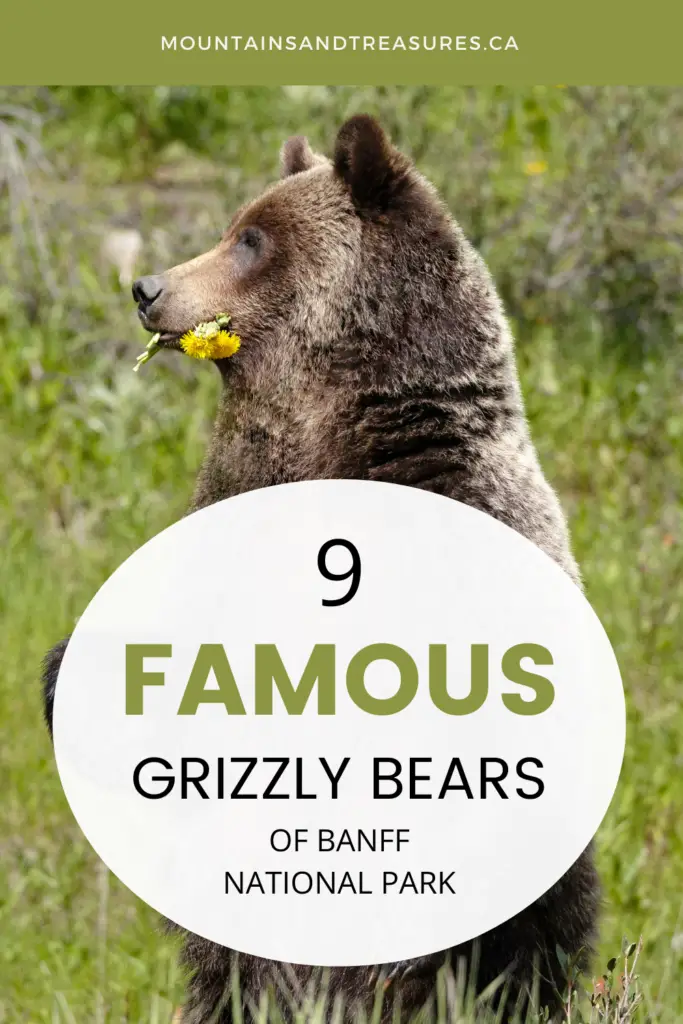

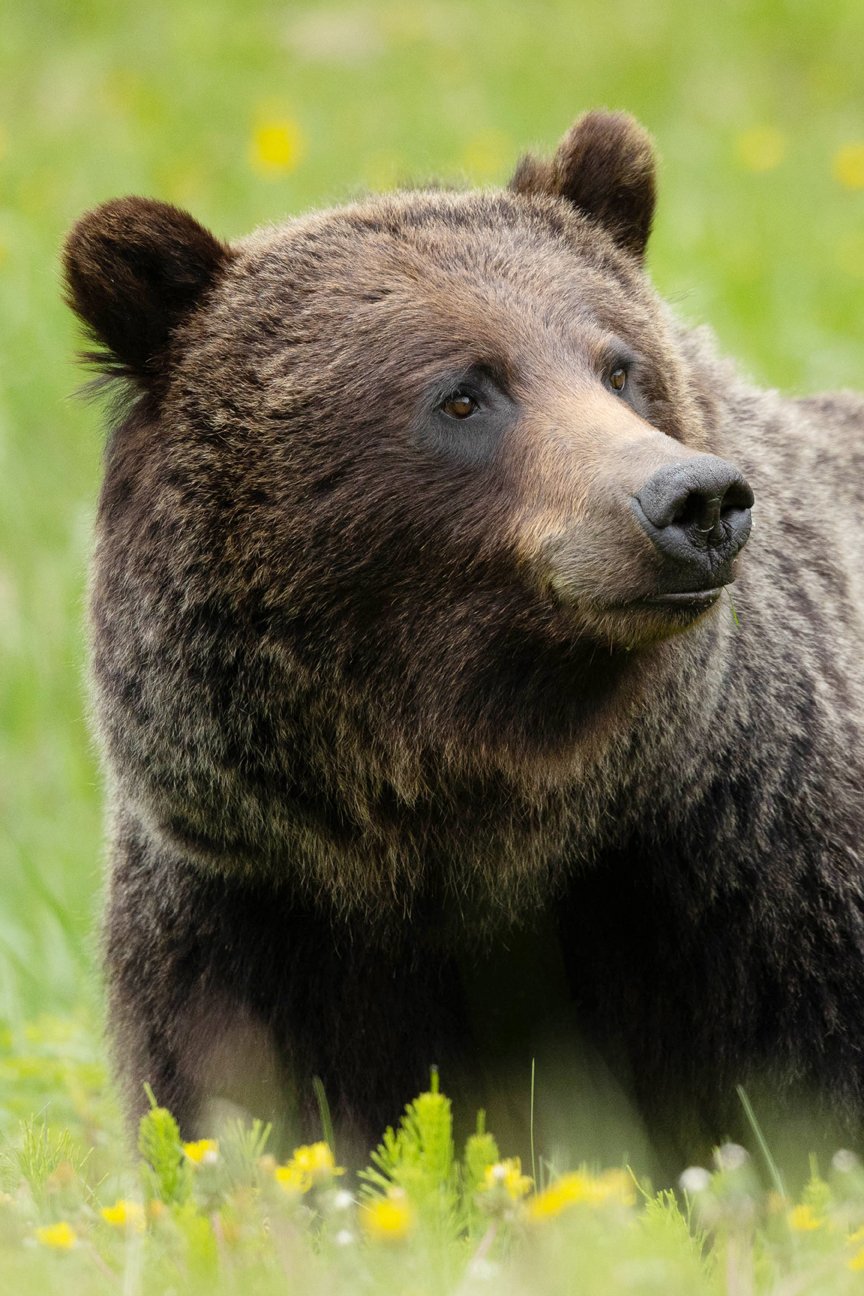
2 comments
Such a lovely blogpost! I loved learning about the bears of Banff! Thanks for putting together such a fun read.
Thanks Lynn! Glad you enjoyed it 🙂